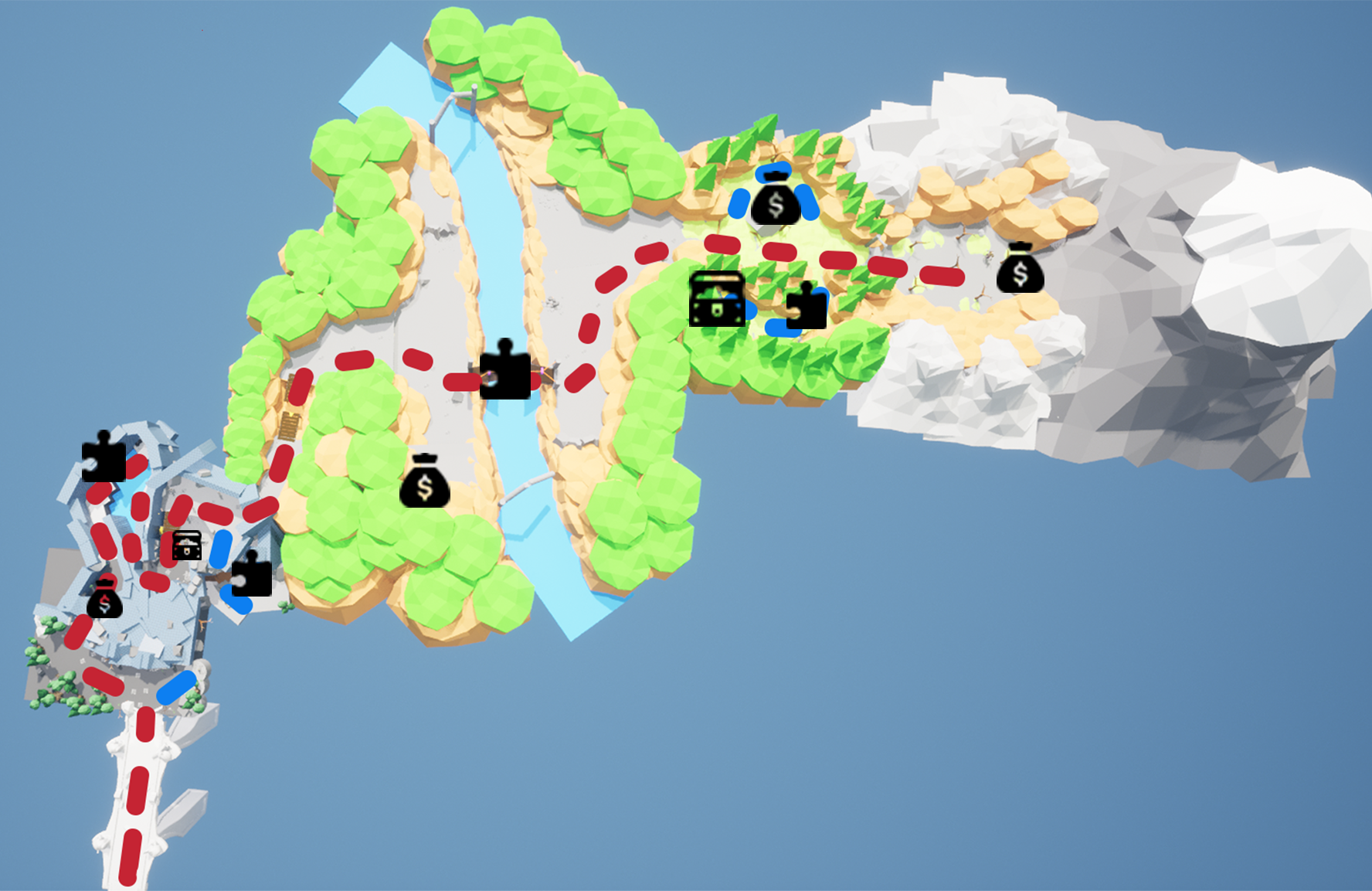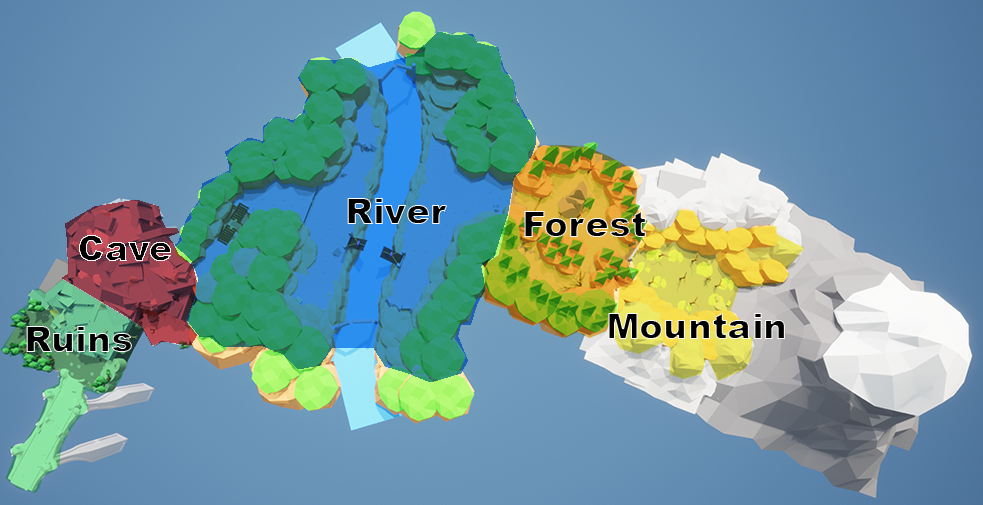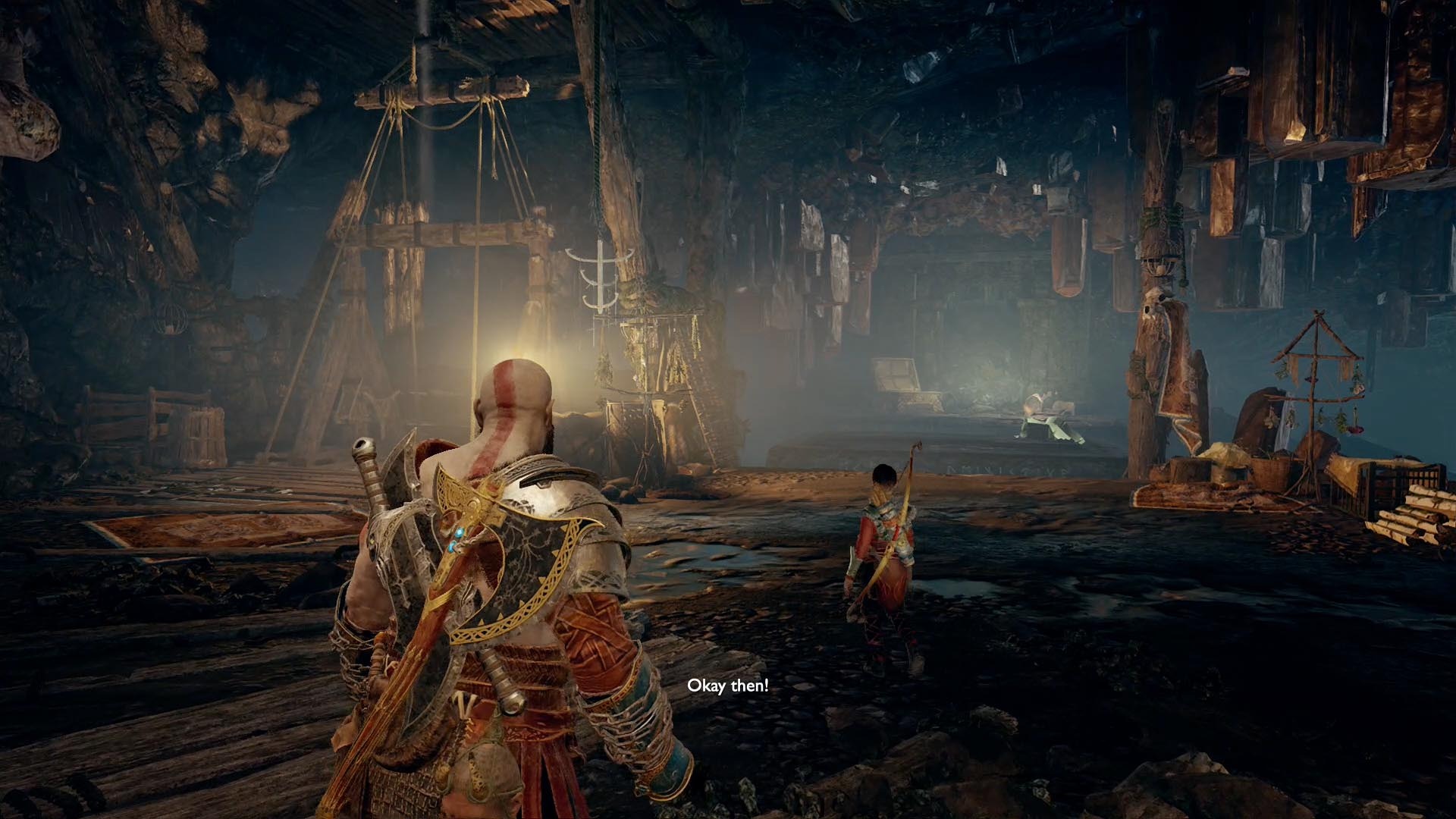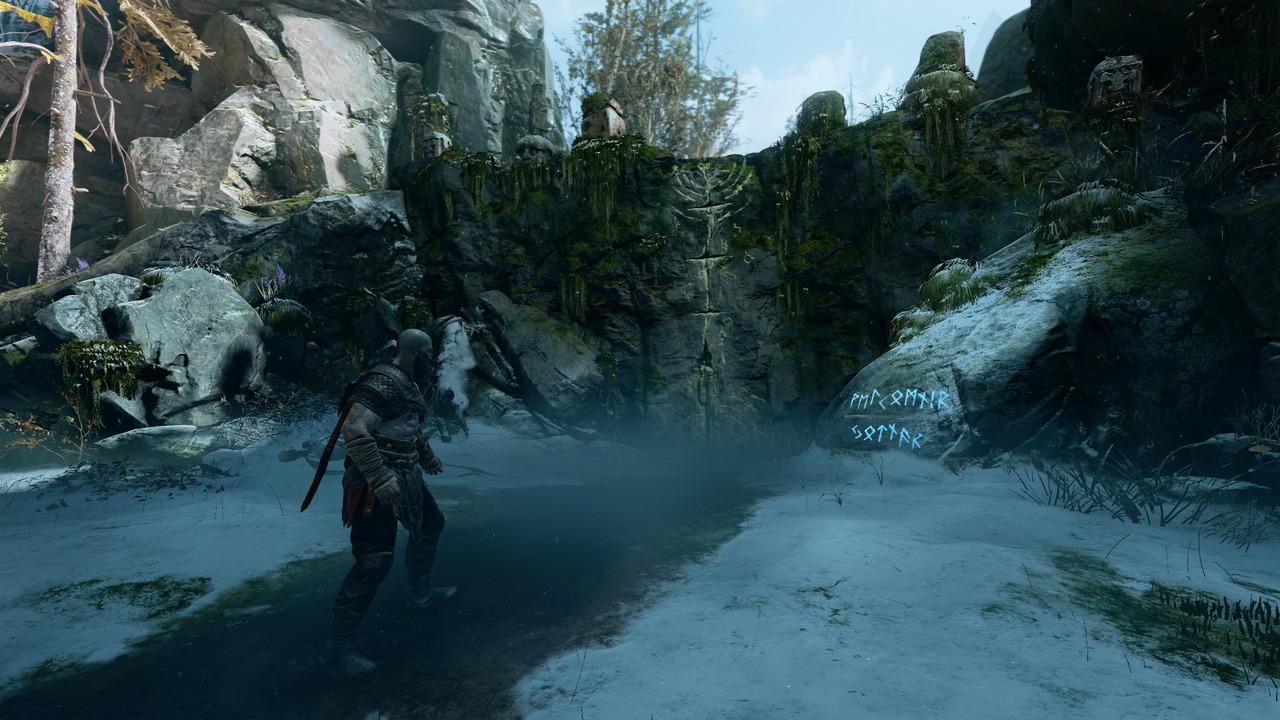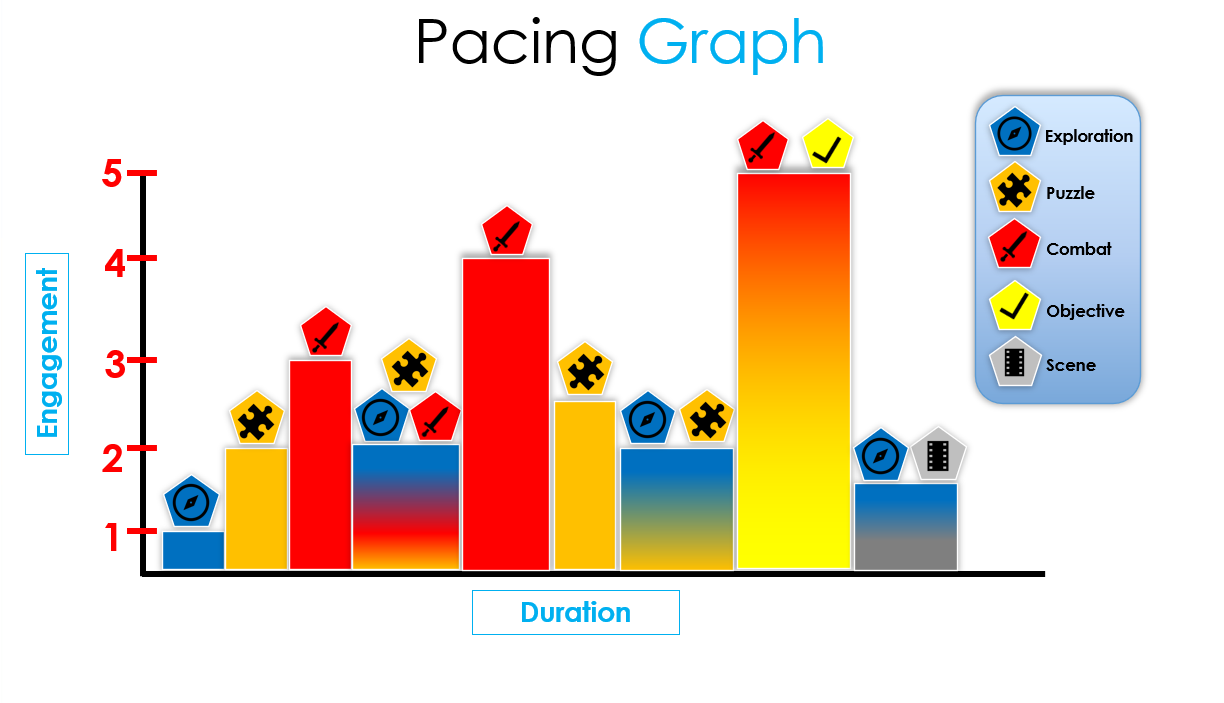

Purpose: Create a mock-level design / Blockout for an established IP with a narrative goal.
Main Path: Red
Optional Path: Blue
Chest, Loot, and Puzzle Locations are all also marked.
The level is cut up into 5 distinct areas to best fit various environments Kratos might find himself in.
While playing I tried to focus on:

Prior to delving into UE5, I meticulously crafted a level design brief to effectively gather my thoughts and structure my design objectives. This document served as a comprehensive guide, encompassing essential elements such as the narrative theme, objectives, mechanics, beats, and pacing. By utilizing a level design brief, I aimed to consolidate and streamline all of my ideas into a single coherent record, ensuring clarity and coherence throughout the development process.
Once I had a clear vision of how I wanted to structure my level, I began gathering references using in-game photos. I examined various individual levels to identify potential sources of inspiration. In addition to in-game photos, I sought real-life references and studied medieval ruin structures to gain a deeper understanding of how the area might have appeared before its eventual collapse. This research helped me develop a more comprehensive and authentic portrayal of the environment.
To start my 2D layout, I wanted to implement a few fundamental considerations from my playthrough of GOW 2018:
I wanted to hone in on the core gameplay loop while also utilizing the three main pillars of GOW: narrative, combat, and exploration.
With this in mind, I started to think of areas that Kratos may find himself in on Midgard. I then began to construct different combinations of areas. I thought to myself, what five areas would logically make sense to be near one another? Do all of these areas need to be natural, or can they be man-made?
Once I had a vague idea of the different areas I wanted, I began to draw a 2D map (seen on the left).
After some feedback, however, I realized I was making two very large parts of the map optional, and a player could potentially even miss the path to get to them. After a basic blockout and some playtesting, I reworked the map and arrived at the basic structure of the final layout (seen on the right).
The overall idea for this landscape would be that a temple once was built on the side of a mountain, and the nearby river would provide the inhabitants of the structure with water, food, and trade. Over hundreds of years, however, the temple would eventually collapse and form a cave-like structure. This area would then attract the attention of the Draugr King, who would plant himself at the base side of the mountain.

For my blockout, I decided to build from front to back, starting with the Bridge and the ruins area. Once I was satisfied with the overall flow, I proceeded to add each subsequent area. Collecting feedback on the level, I received mostly positive responses. However, two key points stood out:
Moving on to the individual areas:
Ruins: represents a collapsed temple, conveying its decay over hundreds of years. I employed rocks and basic geometry to effectively depict the fallen state of this location, deliberately creating an ambiguous path for Kratos.
Cave: deviates from a typical cave design, instead presenting a dangerous path formed by the remnants of the temple. This detour forces Kratos away from the critical path.
River: serves as a midway point in the level, situated at the mountain's base and facilitating trade access for the surrounding lands. However, the Draugr king's presence instills fear, leading to a halt in trade. Here, I strategically placed a second puzzle, forcing players into a challenging situation where they must defeat enemies and solve the puzzle to progress.
Forest: area serves as an exploration segment, allowing players to recuperate after a grueling battle before facing the final encounter. To provide an optional element, I incorporated a Nornir chest, enticing some players to take the time to unlock it and discover its hidden contents.
Mountain: this arena is where Kratos engages in decisive single combat against the Draugr king. To heighten the challenge, I strategically placed destructible trees, acting as environmental hazards. The circular shape of the arena conveys the limited cover available, emphasizing the need for strategic thinking and resourcefulness to overcome the formidable enemy.
In the future, I intend to revisit the level and refine the area placements to achieve a more cohesive circular flow. However, for now, I am content with how these five areas come together, aligning with my overall narrative vision.

